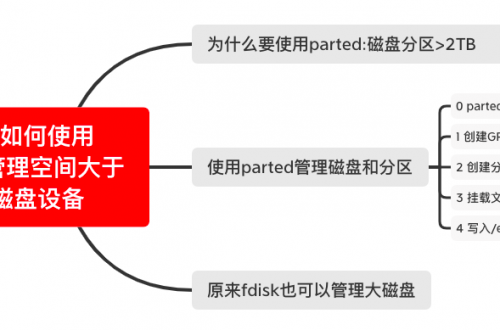Redis持久化配置不当带来的性能问题分析
一 背景说明
两台机器,server1跑Redis缓存数据库和应用;
server2向server1的应用执行一个Redis查询请求,并持续监控该请求延迟;
server1: 172.16.17.7,4C 8G;
server2: 172.16.11.36,24C 64G;
二 分析步骤和思路
1 server1启动并验证容器正常工作
[root@guoxin7 ~]# docker run --name=redis -itd -p 10000:80 feisky/redis-server Unable to find image 'feisky/redis-server:latest' locally ... be617247edfe0e7603e13db07bdf447153ae8bb7d21547465e5dbc44bc33be3b [root@guoxin7 ~]# docker run --name=app --network=container:redis -itd feisky/redis-app Unable to find image 'feisky/redis-app:latest' locally Trying to pull repository docker.io/feisky/redis-app ... ... ae8e5b690d0a5719c3bd646de9fac402e8bbb0446b6e9c35c90ac600455cfd70 [root@guoxin7 ~]# docker ps CONTAINER ID IMAGE COMMAND CREATED STATUS PORTS NAMES ae8e5b690d0a feisky/redis-app "python /app.py" 2 minutes ago Up 2 minutes app be617247edfe feisky/redis-server "docker-entrypoint..." 3 minutes ago Up 3 minutes 6379/tcp, 0.0.0.0:10000->80/tcp redis [root@guoxin7 ~]# curl http://172.16.17.7:10000 hello redis [root@guoxin7 ~]#
2 server1初始化Redis缓存数据
[root@guoxin7 ~]# time curl http://172.16.17.7:10000/init/10000
{"elapsed_seconds":152.70450973510742,"keys_initialized":10000}
real 2m32.714s
user 0m0.007s
sys 0m0.006s
[root@guoxin7 ~]# 3 server2调用接口访问server1 redis
[root@centos-master ~]# curl http://172.16.17.7:10000/get_cache
{"count":3364,"data":["3d6bc5c4-aa48-11ec-abe1-0242ac110002",
....
"elapsed_seconds":62.205448150634766,"type":"good"}
[root@centos-master ~]# 发现,通过接口调用serve1的Redis需要62秒,1分多钟,这太慢了。
4 使用top和iostat工具对server1资源使用情况分析和监测
server2对server1持续进行接口访问请求:
[root@centos-master ~]# while true; do time curl http://172.16.17.7:10000/get_cache ;sleep 10 ;done ... 10002"],"elapsed_seconds":46.78778529167175,"type":"good"} real 0m46.806s user 0m0.007s sys 0m0.006s
然后再在server1上分别使用top监控资源使用情况:
[root@guoxin7 ~]# top top - 15:02:47 up 2 days, 4:07, 4 users, load average: 0.52, 0.39, 0.63 Tasks: 229 total, 1 running, 228 sleeping, 0 stopped, 0 zombie %Cpu0 : 2.7 us, 1.8 sy, 0.0 ni, 51.6 id, 43.6 wa, 0.0 hi, 0.4 si, 0.0 st %Cpu1 : 0.0 us, 0.0 sy, 0.0 ni, 99.6 id, 0.0 wa, 0.0 hi, 0.4 si, 0.0 st %Cpu2 : 0.0 us, 0.0 sy, 0.0 ni,100.0 id, 0.0 wa, 0.0 hi, 0.0 si, 0.0 st %Cpu3 : 0.4 us, 0.4 sy, 0.0 ni, 99.1 id, 0.0 wa, 0.0 hi, 0.0 si, 0.0 st KiB Mem : 41037092 total, 35626136 free, 1150372 used, 4260584 buff/cache KiB Swap: 8257532 total, 8257532 free, 0 used. 36866508 avail Mem PID USER PR NI VIRT RES SHR S %CPU %MEM TIME+ COMMAND 13627 root 20 0 267236 25456 5148 S 3.5 0.1 8:34.22 python /app.py 13375 100 20 0 30900 9896 1140 D 1.8 0.0 4:39.50 redis-server /etc/redis.conf 429 root 0 -20 0 0 0 S 0.4 0.0 0:05.36 [kworker/0:1H] 9388 postgres 20 0 3435712 2180 1292 S 0.4 0.0 0:11.54 postgres: autovacuum launcher process 15286 root 20 0 162248 2504 1692 R 0.4 0.0 0:52.09 top
看到服务器上CPU资源并没有被严重消耗,同时内存资源也充足,机器整体负载也不高。但是,客户端请求Redis响应就是慢。
使用iostat -dx 1;监测系统磁盘IO情况:
[root@guoxin7 ~]# iostat -dx 1 Linux 3.10.0-1160.59.1.el7.x86_64 (guoxin7) 2022年03月23日 _x86_64_ (4 CPU) Device: rrqm/s wrqm/s r/s w/s rkB/s wkB/s avgrq-sz avgqu-sz await r_await w_await svctm %util sda 0.00 0.08 38.43 16.61 16146.82 1170.35 629.19 2.44 44.28 9.76 124.13 3.03 16.66 scd0 0.00 0.00 0.00 0.00 0.01 0.00 114.22 0.00 6.89 6.89 0.00 6.67 0.00 dm-0 0.00 0.00 38.43 16.70 16146.71 1170.26 628.25 2.47 44.73 9.76 125.23 3.02 16.66 dm-1 0.00 0.00 0.00 0.00 0.01 0.00 50.09 0.00 1.77 1.77 0.00 1.57 0.00 Device: rrqm/s wrqm/s r/s w/s rkB/s wkB/s avgrq-sz avgqu-sz await r_await w_await svctm %util sda 0.00 0.00 0.00 135.00 0.00 340.50 5.04 0.94 6.93 0.00 6.93 6.99 94.30 scd0 0.00 0.00 0.00 0.00 0.00 0.00 0.00 0.00 0.00 0.00 0.00 0.00 0.00 dm-0 0.00 0.00 0.00 135.00 0.00 343.50 5.09 0.94 6.93 0.00 6.93 6.99 94.40 dm-1 0.00 0.00 0.00 0.00 0.00 0.00 0.00 0.00 0.00 0.00 0.00 0.00 0.00 Device: rrqm/s wrqm/s r/s w/s rkB/s wkB/s avgrq-sz avgqu-sz await r_await w_await svctm %util sda 0.00 0.00 0.00 96.00 0.00 244.00 5.08 0.96 10.11 0.00 10.11 10.03 96.30 scd0 0.00 0.00 0.00 0.00 0.00 0.00 0.00 0.00 0.00 0.00 0.00 0.00 0.00 dm-0 0.00 0.00 0.00 96.00 0.00 244.00 5.08 0.96 10.11 0.00 10.11 10.03 96.30 dm-1 0.00 0.00 0.00 0.00 0.00 0.00 0.00 0.00 0.00 0.00 0.00 0.00 0.00 Device: rrqm/s wrqm/s r/s w/s rkB/s wkB/s avgrq-sz avgqu-sz await r_await w_await svctm %util sda 0.00 0.00 0.00 160.00 0.00 421.50 5.27 0.93 5.83 0.00 5.83 5.83 93.20 scd0 0.00 0.00 0.00 0.00 0.00 0.00 0.00 0.00 0.00 0.00 0.00 0.00 0.00 dm-0 0.00 0.00 0.00 160.00 0.00 421.50 5.27 0.93 5.83 0.00 5.83 5.83 93.20 dm-1 0.00 0.00 0.00 0.00 0.00 0.00 0.00 0.00 0.00 0.00 0.00 0.00 0.00 ^C [root@guoxin7 ~]#
系统的IO资源使用率偏高,随着时间的推移,当客户的请求结束时,磁盘使用率%util下降。同时,也看到随着磁盘使用率的上升和下降,磁盘的写次数w/s和wkB/s指标也响应的上升和下降。
这里有个疑问出现:客户端请求服务端的Redis,为啥服务端出现比较明显的磁盘写,而不是磁盘读?通常来讲,Redis作为缓存数据库服务来用,应该读大于写才符合常理的啊。
5 pidstat来跟踪Redis进程的磁盘IO
在server2上,通过pidstat -d -l -p redis_pid 1;命令来检测Redis进程的磁盘IO情况:
[root@guoxin7 ~]# pidstat -d -l -p 13375 1 Linux 3.10.0-1160.59.1.el7.x86_64 (guoxin7) 2022年03月23日 _x86_64_ (4 CPU) 15时18分24秒 UID PID kB_rd/s kB_wr/s kB_ccwr/s Command 15时18分25秒 100 13375 0.00 212.00 0.00 redis-server /etc/redis.conf 15时18分26秒 100 13375 0.00 224.00 0.00 redis-server /etc/redis.conf 15时18分27秒 100 13375 0.00 172.00 0.00 redis-server /etc/redis.conf 15时18分28秒 100 13375 0.00 0.00 0.00 redis-server /etc/redis.conf 15时18分29秒 100 13375 0.00 0.00 0.00 redis-server /etc/redis.conf 15时18分30秒 100 13375 0.00 0.00 0.00 redis-server /etc/redis.conf 15时18分31秒 100 13375 0.00 0.00 0.00 redis-server /etc/redis.conf 15时18分32秒 100 13375 0.00 0.00 0.00 redis-server /etc/redis.conf 15时18分33秒 100 13375 0.00 0.00 0.00 redis-server /etc/redis.conf 15时18分34秒 100 13375 0.00 0.00 0.00 redis-server /etc/redis.conf 15时18分35秒 100 13375 0.00 0.00 0.00 redis-server /etc/redis.conf 15时18分36秒 100 13375 0.00 0.00 0.00 redis-server /etc/redis.conf 15时18分37秒 100 13375 0.00 40.00 0.00 redis-server /etc/redis.conf 15时18分38秒 100 13375 0.00 272.00 0.00 redis-server /etc/redis.conf 15时18分39秒 100 13375 0.00 336.00 0.00 redis-server /etc/redis.conf 15时18分40秒 100 13375 0.00 204.00 0.00 redis-server /etc/redis.conf 15时18分41秒 100 13375 0.00 284.00 0.00 redis-server /etc/redis.conf 15时18分42秒 100 13375 0.00 252.00 0.00 redis-server /etc/redis.conf ^C 平均时间: 100 13375 0.00 110.89 0.00 redis-server /etc/redis.conf [root@guoxin7 ~]#
明显可以看到,Redis后台进程的13375磁盘IO也主要是写kB_wr/s,读操作kB_rd/s为0。更为重要的是,跟随客户端调用Redis请求时,13375开始写磁盘,客户端请求停止时,看到磁盘写的值为0.
到这里,基本可以判断出客户端请求Redis响应慢的问题,基本上可以认定是Redis自身的配置或者是使用的问题了。服务器上的资源充足够用,CPU消耗不高,内存够用,缓存也稳定,几乎没有太大抖动,系统负载也不高。
6 跟踪查看Redis进程在内核的系统调用和打开文件信息
strace跟踪进程的内核调用:strace -fp 13375
[root@guoxin7 ~]# strace -fp 13375
...
[pid 13375] read(8, "*3\r\n$4\r\nSADD\r\n$4\r\ngood\r\n$36\r\n597"..., 16384) = 67
[pid 13375] read(3, 0x7ffd8bb6edf7, 1) = -1 EAGAIN (资源暂时不可用)
[pid 13375] write(18, "*3\r\n$4\r\nSADD\r\n$4\r\ngood\r\n$36\r\n597"..., 67) = 67
[pid 13375] fdatasync(18) = 0
[pid 13375] write(8, ":1\r\n", 4) = 4
[pid 13375] epoll_pwait(5, [{EPOLLIN, {u32=8, u64=8}}], 10128, 51, NULL, 8) = 1
[pid 13375] read(8, "*2\r\n$3\r\nGET\r\n$41\r\nuuid:3f57d508-"..., 16384) = 61
[pid 13375] read(3, 0x7ffd8bb6edf7, 1) = -1 EAGAIN (资源暂时不可用)
[pid 13375] write(8, "$3\r\nbad\r\n", 9) = 9
[pid 13375] epoll_pwait(5, [{EPOLLIN, {u32=8, u64=8}}], 10128, 50, NULL, 8) = 1
[pid 13375] read(8, "*4\r\n$4\r\nSCAN\r\n$5\r\n13396\r\n$5\r\nMAT"..., 16384) = 48
[pid 13375] read(3, 0x7ffd8bb6edf7, 1) = -1 EAGAIN (资源暂时不可用)
[pid 13375] write(8, "*2\r\n$5\r\n14932\r\n*10\r\n$41\r\nuuid:53"..., 500) = 500
[pid 13375] epoll_pwait(5, [{EPOLLIN, {u32=8, u64=8}}], 10128, 50, NULL, 8) = 1
[pid 13375] read(8, "*2\r\n$3\r\nGET\r\n$41\r\nuuid:53e5509a-"..., 16384) = 61
[pid 13375] read(3, 0x7ffd8bb6edf7, 1) = -1 EAGAIN (资源暂时不可用)
[pid 13375] write(8, "$4\r\ngood\r\n", 10) = 10
[pid 13375] epoll_pwait(5, [{EPOLLIN, {u32=8, u64=8}}], 10128, 49, NULL, 8) = 1
[pid 13375] read(8, "*3\r\n$4\r\nSADD\r\n$4\r\ngood\r\n$36\r\n53e"..., 16384) = 67
[pid 13375] read(3, 0x7ffd8bb6edf7, 1) = -1 EAGAIN (资源暂时不可用)
[pid 13375] write(18, "*3\r\n$4\r\nSADD\r\n$4\r\ngood\r\n$36\r\n53e"..., 67) = 67
[pid 13375] fdatasync(18^Cstrace: Process 13375 detached
<detached ...>
strace: Process 13410 detached
strace: Process 13411 detached
strace: Process 13412 detached
[root@guoxin7 ~]# Redis进程主要系统调用是write(),read(),和fdatasync()以及epoll_pwait()等操作。
查看进程打开文件信息:lsof -p 13375
[root@guoxin7 ~]# lsof -p 13375 ... COMMAND PID USER FD TYPE DEVICE SIZE/OFF NODE NAME redis-ser 13375 100 3r FIFO 0,9 0t0 6374739 pipe lsof: no pwd entry for UID 100 redis-ser 13375 100 4w FIFO 0,9 0t0 6374739 pipe lsof: no pwd entry for UID 100 redis-ser 13375 100 5u a_inode 0,10 0 7418 [eventpoll] lsof: no pwd entry for UID 100 redis-ser 13375 100 6u sock 0,7 0t0 6374741 protocol: TCP lsof: no pwd entry for UID 100 redis-ser 13375 100 8u sock 0,7 0t0 6389057 protocol: TCP lsof: no pwd entry for UID 100 redis-ser 13375 100 9u sock 0,7 0t0 6598637 protocol: TCP lsof: no pwd entry for UID 100 redis-ser 13375 100 18w REG 253,0 1125462 210213898 /data/appendonly.aof [root@guoxin7 ~]#
Redis进程在写文件描述符为18号的文件,读取3号文件是pipe,以及8号文件的TCP Socket文件。
7 调整Redis的持久化配置参数
进入Redis container里,查看Redis的持久化配置:
#1 先进入Redis container [root@guoxin7 ~]# docker exec -it redis /bin/sh #2 redis-cli连接到Redis /data # redis-cli #3 查看持久化配置 127.0.0.1:6379> CONFIG GET 'append*' 1) "appendfsync" 2) "always" 3) "appendonly" 4) "yes" 127.0.0.1:6379>
这里,看到当前的Redis持久化存储方式采用的是AOF (Append Only File),即追加文件的方式。并且配置(“appendfsync”=”always”)的是每新增一个key-value,就把它持久化写入到文件里,防止内存中的这个key-value丢失。
我们这里尝试把Redis的持久化方式改为”appendfsync”=”no”,即不是每次都要实时写出追加到文件,而是交给文件系统去处理的方式。
127.0.0.1:6379> CONFIG SET appendfsync=no (error) ERR Unknown subcommand or wrong number of arguments for 'SET'. Try CONFIG HELP. 127.0.0.1:6379> CONFIG SET "appendfsync"="no" Invalid argument(s) 127.0.0.1:6379> CONFIG SET appendfsync no OK 127.0.0.1:6379> CONFIG GET appendfsync 1) "appendfsync" 2) "no" 127.0.0.1:6379> CONFIG GET 'append*' 1) "appendfsync" 2) "no" 3) "appendonly" 4) "yes" 127.0.0.1:6379>
然后,观察客户端发送的Redis请求从之前的耗时60秒左右,降低到1-2秒左右。
[root@centos-master ~]# while true; do time curl http://172.16.17.7:10000/get_cache ;sleep 10 ;done ... "elapsed_seconds":2.073829174041748,"type":"good"} real 0m2.089s user 0m0.003s sys 0m0.009s
并且,服务端也不再看到Redis进程频繁的磁盘写操作了。
三 小结和收获
1 思路
客户端发起Redis调用请求耗时偏高,服务端监控到CPU、内存、负载、系统缓存都比较正常;此时,不能判断没有性能问题,客户端请求延迟很高,继续跟踪Redis进程的磁盘IO情况(pidstat -d -l -p redis_pid 1;),strace -fp redis_pid;和lsof -p redis_pid;查看Redis进程在内核中的系统调用和打开文件信息;判断问题基本上是Redis自身的配置和使用不对;
2 学习了Redis的持久化不同配置方案
详细的信息,可以从Redis官网查看:https://redis.io/topics/persistence
3 主机资源正常不代表没有性能问题
此案例中,服务端监控到CPU、内存、负载、系统缓存都比较正常;此时,不能判断没有性能问题,
4 Redis的异常写操作
Redis的异常写操作和当前的场景不太吻合,客户端发起Redis调用请求,查询缓存数据库,不应该在服务器端看到明显的Redis写请求操作。
四 参考和链接
倪朋飞老师的Linux性能优化实战,29 | 案例篇:Redis响应严重延迟,如何解决?
Redis官网关于持久化配置查看:https://redis.io/topics/persistence



一条评论
Pingback: